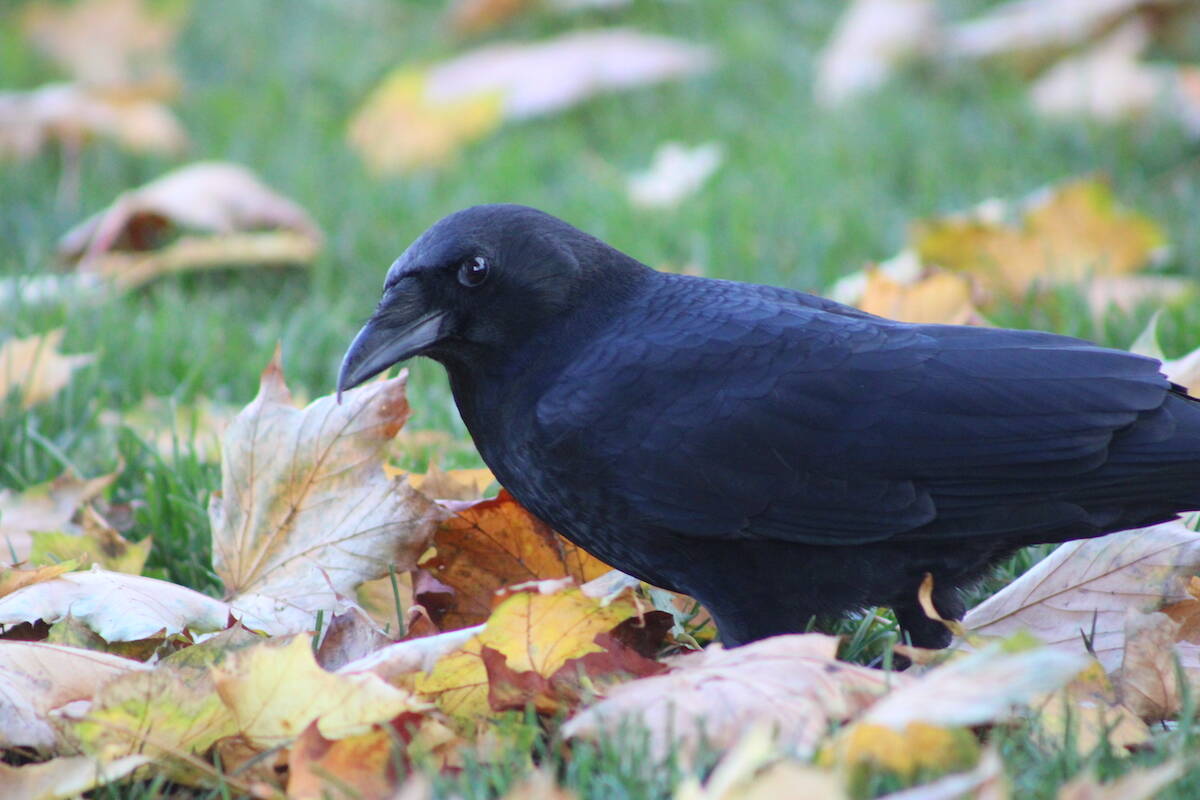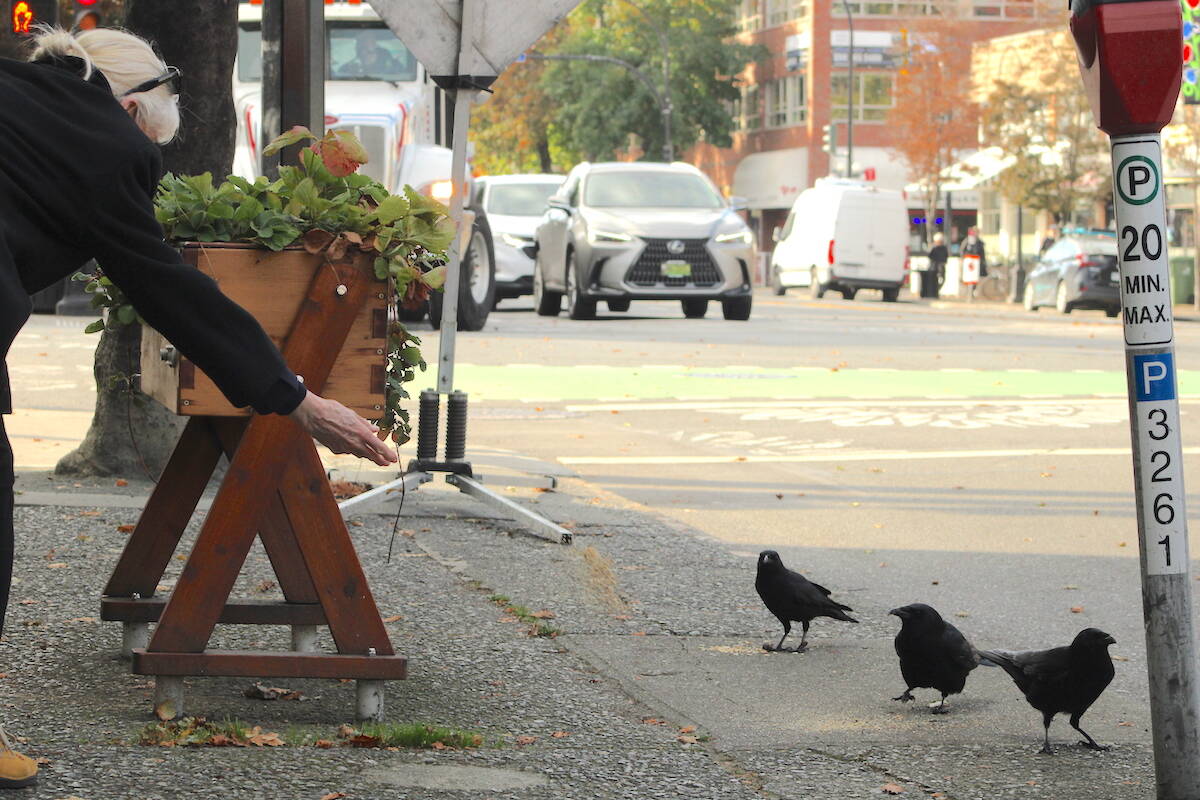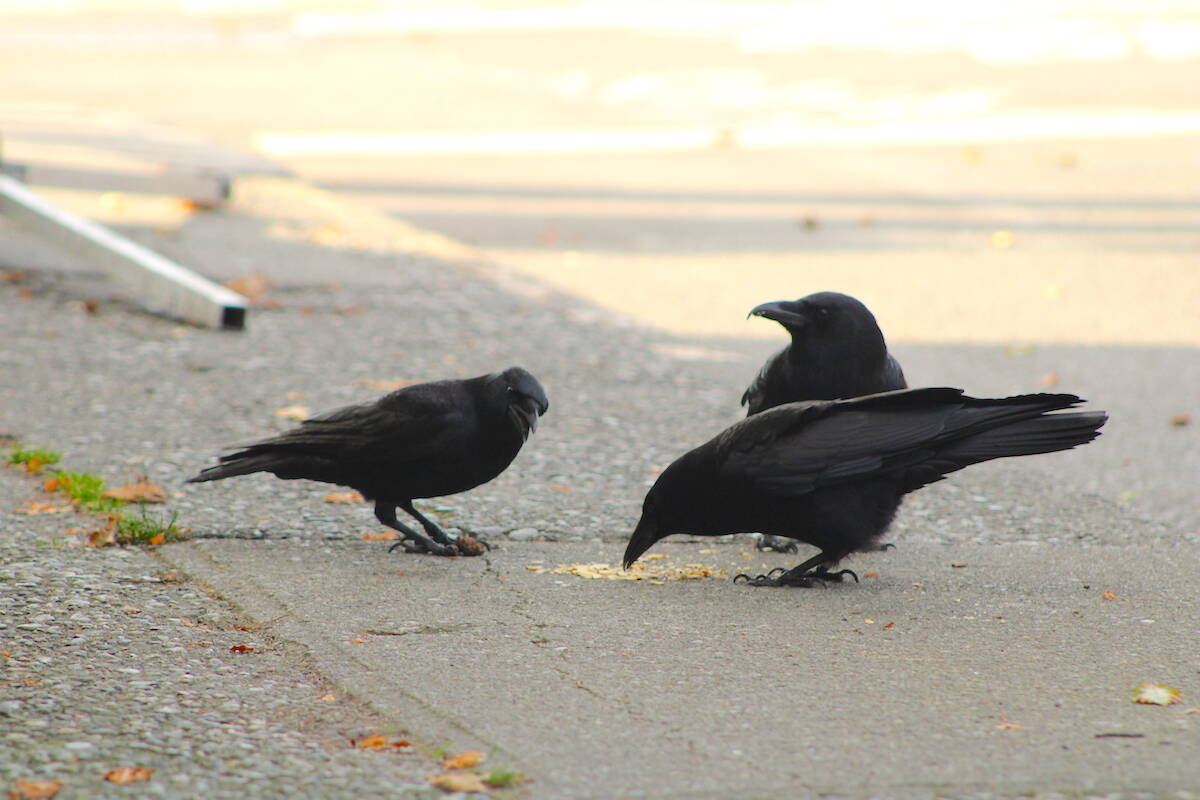Within a block of the downtown Vancouver office where Jim O’Leary used to work, multiple crow nests could be found in the leafy trees lining the streets.
“Just about every day someone would come in and say ‘Oh, I got attacked by a crow,’” O’Leary said.
He knew crows are smart – pointing to their use of tools and ability to remember physical traits – but the former Langara College GIS program instructor knew he could help people outwit the birds.
It’s what led to him creating CrowTrax, which allows people to log where crows attacked them and lets them leave a description of the incident.
Around 30 crow kerfuffles from in and around Victoria were cataloged on the interactive website this year – with several incident clusters tracked downtown. Accounts from those incidents described how crows dive-bombed, clawed and swooped at people.
The birds’ common tactic of attacking from behind makes it unsettling for people who have no way of preparing, O’Leary said, adding he’s heard stories of talons getting caught in longer hair.
“What the CrowTrax site has become, in a way it’s kind of therapy. People need to tell to tell their story,” he said.
O’Leary opens the website to submissions during nesting season every year, but he always gets emails by early spring urging the site to go live because people have gotten attacked and want to avoid cranky crow routes.
He hopes more users worldwide will flock to CrowTrax and he’s in the midst of implementing AI to filter out bogus entries, which will allow him to keep the site open to submissions year-round.
O’Leary was surprised to hear of a crow attack downtown on Oct. 16 as he said it’s less common at this time of year. They’re not the only birds feeling feisty this fall as the Town of Sidney had to post an Oct. 12 notice about owls behaving aggressively around people at Reay Creek Park.
Nadia Xenakis, a BC SPCA wild animal welfare specialist, said it’s a strange time of year for owls to go after people, but noted wildlife will generally show aggression if they feel they’re threatened or provoked.
“So they could be defending their territory, their mate or their young,” she said.
Some owls born in the spring may still be learning how to hunt and another possible explanation for the recent encounters is that people in the park may have been in between the birds and their prey at the time, Xenakis said.
She and O’Leary said crow dive-bombings usually correlate with areas where they’re being reliably fed. That can also lead to more crows nesting in urban areas, Xenakis said.
“An easy way to circumvent that is to never feed wildlife,” she said.
Both animal observers noted crows can remember certain traits – especially if they’re associated with people who antagonized or threatened them – so the birds may target other people with similar traits.
O’Leary cited one study where a researcher dressed as a clown and bothered crows on a university campus. The researcher then returned in the clown costume a year later and “everywhere he went the crows harassed him,” O’Leary said.
Xenakis said most issues with birds are seasonal or temporary as they look to protect their young, so it’s best to avoid problem areas if possible. If running a gauntlet known for angry birds can’t be avoided, it’s recommended people walk with an umbrella or cover their head.
Another issue is nesting animals are being forced closer to people as bird habitats are destroyed or encroached on.
“We need to have areas where they can exist and we can give them space so they don’t need to have these defensive behaviours,” Xenakis said. “But we also shouldn’t be feeding them because that will draw them into these areas where we are then having conflict with them.”
READ: Sidney warns walkers to wear a hat and watch for aggressive owls



